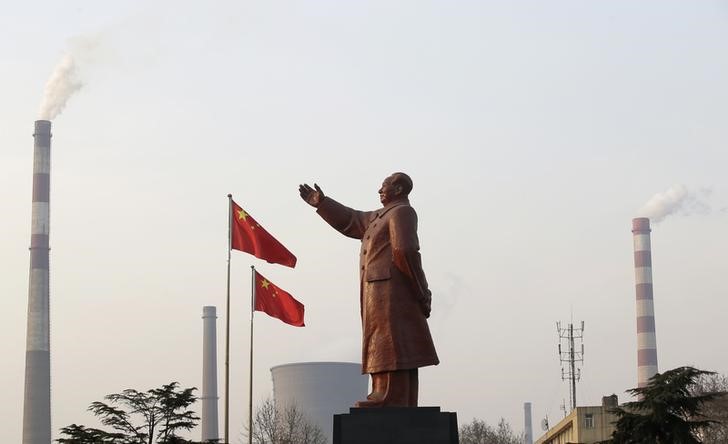By Barani Krishnan
Investing.com - China or OPEC+?
The question came up again for oil market participants on Monday and the answer — after an 11-month low hit by crude prices on Beijing’s Covid mess — was that the oil producers alliance will do whatever’s necessary to pull the market back higher.
Fierce public protests against Covid lockdowns in top oil importer China put crude under renewed pressure as traders began their week with nerves already strained by concerns about Friday’s impending US jobs number for November and how that could impact the Dec. 14 interest rate decision by the Federal Reserve.
London-traded Brent, the global benchmark for crude, inched toward a test of its $80 per barrel support in Monday’s early trade. New York-traded West Texas Intermediate, or WTI, which serves as the U.S. crude futures gauge, hovered near the lower end of $70 per barrel.
By early afternoon though, the market was looking up a little meaningfully for oil bulls, for the first time since late last week.
WTI settled at $77.24 per barrel, up 96 cents, or 1.3% on the day. It earlier sank to $73.61, its lowest since December 2021. Notwithstanding its positive showing for the day, the U.S. crude benchmark was down almost 11% for November.
Brent was at $83.83 per barrel, up 12 cents, or 0.1%. Like WTI, Brent hit a 11-month low earlier, sinking to $80.83. For all of November, the global crude benchmark was down nearly 12%.
The rebound came after markets forecaster Eurasia predicted that OPEC+ “will seriously consider a new cut” at its Dec. 4 meeting.
OPEC+ — which groups the Saudi-led 13-nation OPEC, or Organization of the Petroleum Exporting Countries, with 10 oil producing allies steered by Russia already has in place an agreement to cut production by two million barrels a day until end of next year to boost crude prices, which have fallen some 40% from their March highs.
Last week, Saudi Energy Minister Abdulaziz bin Salman indicated that the alliance will likely add to cuts when it meets this coming weekend.
“It isn’t much of a mystery … what OPEC+ will likely want to do, to get the market back up,” said John Kilduff, partner at New York energy hedge fund Again Capital. “The question is whether these cuts they call for are genuinely making a difference to prices, given that they are already producing well below the levels they claim to be. So, whatever they say they are taking off the market is already done, in terms of real barrels.”
Even before the two-million-bpd cut it called for from November, OPEC+ had been producing about three million barrels a day less than its stated production ceiling. Rystad Energy in a note issued at the time OPEC+ announced the November cut estimated that the global oil market will be oversupplied through the end of the year.
Those estimates came before China’s latest Covid woes.
Since then, expectations for a recovery in Chinese oil demand have faded as daily Covid cases in the country hit record levels, spurring officials to step up containment measures and movement curbs. According to Australian-New Zealand bank ANZ, China’s surge in new infections has lowered its implied oil demand by at least one million barrels daily than the previous average.
Amid the challenging backdrop for energy demand, some Chinese refiners are also refraining from buying cargoes of a favored Russian grade, cutting demand just as traders wait for more details on a Group of Seven, or G7, nations plan to cap Russian oil alongside European Union, or EU, sanctions that start on Dec. 5.
G7 and EU diplomats have been discussing a Russian oil price cap at between $65 and $70 a barrel, but have been unable to reach an agreement, Reuters reported.
The aim of the G7 and EU is to limit the revenue from oil that could fund Moscow's military offensive in the Ukraine without disrupting global oil markets, but the proposed level is broadly in line with what Asian buyers are already paying.
“It's looking increasingly likely to be done at a level that doesn't particularly hinder Russia's ability to sell crude — which is contributing to the drop in oil prices — or put its buyers in an uncomfortable position,” Craig Erlam, analyst at OANDA, said, referring to the price cap.
“The outcome will likely factor in how OPEC+ responds this weekend, and I expect the rumor mill will, therefore, be busy as the week progresses, which in turn could trigger a lot of oil price volatility over the course of the week.”
